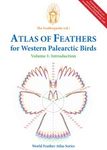By: Tony D Williams(Editor), Scott McWilliams(Author), Julia A Clarke(Author), Elizabeth MacDougall-Shackleton(Author), Scott MacDougall-Shackleton(Author), Francis Bonier(Author), Chad Eliason(Author)
368 pages, 400 colour photos and colour illustrations
Covering the rich diversity of birdlife, this generously illustrated book takes a close look at their anatomy, morphology, and physiology that underlie their unique behaviour and ecology.
![What Is a Bird? What Is a Bird?]()
Click to have a closer look
About this book
Customer reviews
Biography
Related titles
About this book
There are some 10,000 bird species in existence today, occupying every continent and virtually every habitat on Earth. The variety of bird species is truly astounding, from the tiny bee hummingbird to the large flightless ostrich, making birds one of the most diverse and successful animal groups on the planet. Taking you inside the extraordinary world of birds, What Is a Bird? explores all aspects of these remarkable creatures, providing an up-close look at their morphology, unique internal anatomy and physiology, fascinating and varied behaviour, and ecology. It features hundreds of colour illustrations and draws on a broad range of examples, from the familiar backyard sparrow to the most exotic birds of paradise. A must-have book for birders and armchair naturalists, What Is a Bird? is a celebration of the rich complexity of bird life.
- An absorbing and beautifully presented exploration of the natural history of birds
- Integrates physiological adaptations with ecology and behaviour
- Features a wealth of colour photographs and explanatory figures
- Uses scanning electron microscope imagery to provide a rare close-up view of structures not normally visible
- Provides insights into our complex relationship with birds, from our enduring fascination with them to the threats they face and the challenges of conservation
Customer Reviews (1)
-
Amazing facts and illustrations working together
By
Keith
9 Mar 2021
Written for Hardback
In recent month I have been giving Zoom talks about how birds live, and a regular question is “what book can I buy that says all this?”. There are several good ones on the market, but this new one edited by Tony Williams manages to convey great scientific facts together with lavish illustrations.
The editorial team is from North America, but rather than just use examples from there, this is a truly worldwide guide to birds with plenty of European species being featured. Indeed many of the more interesting examples of how birds are adapted to succeed can be found elsewhere in the world – from the Antarctic to the Amazon. The main chapters cover all that we want to know – plumage and structure, migration and navigation, food and foraging, social behaviour and communication, reproduction and birds’ relationships with humans.
Just to take migration as an example, we learn about how migration has been studied since the early days of basic bird ringing to the satellite tracking of today. There are examples of how birds can follow the moon and stars, and how magnetic fields are relied upon when the sky is cloudy. There are also details of how climate change will affect our birds and indeed the ways that arrival dates have already been affected.
Another impressive chapter is on the physical side of bird biology with examples of the many adaptations that birds have to enable them to exist in so many varied environments. It is a reminder that next to birds, humans are pretty basic in some ways. Yes, we have larger brains and can do many complex things, but without a compass, we can’t navigate using magnetic fields and we can’t find our way home using the smell of the oceans. Birds are amazing – and this book shows you how.
2 of 2 found this helpful
-
Was this helpful to you? Yes No
Biography
Tony Williams is professor of biological sciences at Simon Fraser University and a fellow of the American Ornithological Society. He is the author of Physiological Adaptations for Breeding in Birds (Princeton) and The Penguins.
By: Tony D Williams(Editor), Scott McWilliams(Author), Julia A Clarke(Author), Elizabeth MacDougall-Shackleton(Author), Scott MacDougall-Shackleton(Author), Francis Bonier(Author), Chad Eliason(Author)
368 pages, 400 colour photos and colour illustrations
Covering the rich diversity of birdlife, this generously illustrated book takes a close look at their anatomy, morphology, and physiology that underlie their unique behaviour and ecology.
"Princeton University Press certainly knows how to put a good bird book together. This is a sumptuously – one might almost say seductively – produced and illustrated compendium of birds, covering (as its subtitle indicates) a wide range of topics. The text, contributed by seven different authors, is eminently readable and impressively up to date. It is no mean feat to cover so much ground in such relatively little space, and this is achieved by adopting a magazine-style format across the ten chapters. [...] 1 was particularly struck by the quality of the photographs, most of which I had not seen before - always refreshing in a book like this. In most cases these nicely complement the text, which in turn is also supplemented by a small number of graphs, maps and boxes containing additional information. This is extremely good value, and I can envisage What Is a Bird? being snapped up by those wanting a beautifully illustrated, up-tot-date account of bird biology."
– Tim Birkhead, British Birds 114, April 2021























































